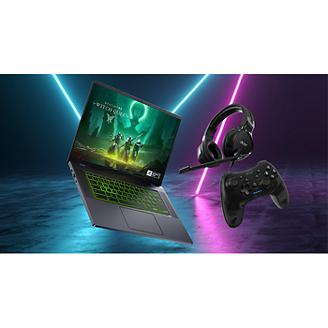-
A New Look at the Acer Iconia X12 Tablet
The Acer Iconia X12 tablet offers an outstanding blend of entertainment and productivity. This article will introduce the benefits of a tablet and the features and specifications of the Acer Iconia X12. Tablets are portable, all-in-one devices with a sensitive touchscreen. They are typically used for playing games, taking pictures, browsing the web, and reading electronic books. They are built for mobility, offering a happy medium between a smartphone and a laptop.
What are the benefits of an Android tablet?
With so many devices on the market, it can be tough to know which is right for your needs. There are significant differences between tablets, smartphones, and laptops, with unique advantages to each. Laptops tend to be bigger and offer more robust computing abilities with more memory storage, making them ideal for multitasking, whereas tablets are smaller and less suitable for intense work sessions. Here are some benefits of a tablet and why they may be a top choice for your needs.
1. Android vs. Windows and Chrome tablets
Android tablets like the Acer Iconia X12 are known for their simplicity, ease of use, and affordability. They also provide access to a huge range of apps via the Google Play Store, which are optimized to run directly on Android devices. While Windows and Chrome tablets are compatible with Android apps, they may not run as smoothly as they are scaled down for their respective operating systems. Chrome tablets are designed for web-based use and therefore tend to rely on using apps in the browser. As such, Android tablets offer a superior choice and quality for entertainment, games, and other apps than Windows and Chrome devices.
2. Lightweight and portable
Tablets are lightweight and portable, with most tablet devices weighing under two lbs (0.90 kg), so you can comfortably carry them in a handbag or purse without noticing much extra weight. This makes them an excellent travel companion, allowing you to take photos and videos to document your trip. Moreover, playing games or watching movies on a tablet is a great way to beat boredom on long journeys or commutes.
3. Long battery life
One major advantage of a tablet device is its long battery life. This is because the hardware components within a tablet consume less power than a laptop, which have a smaller sized battery and more components. Some tablets can last over 12 hours on a single charge, depending on usage, which is enough to get you through a long flight or day of classes.
4. Designed for games and videos
If you enjoy playing games, watching videos, and listening to music, then a tablet might be for you. Tablets are less capable of multitasking and flicking between apps than a laptop but still offer good performance for light tasks like playing games. Moreover, tablets are ideal for note taking during classes and are lightweight enough to carry around in a backpack or school bag. They also support electronic books, helping you save space while still being able to read your favorite novel.
5. Affordability
Tablets are typically more affordable than laptops. Some budget models may cost USD $100 or less, whereas middle tier tablets with a better performance could be in between USD $200 and USD $400. Premium tablets are priced from USD $500, delivering a higher performance for their price tag.
Introducing the Acer Iconia X12 tablet
The Acer Iconia X12 tablet is the perfect blend of entertainment and productivity. It includes stunning AMOLED visuals and quadspeakers sound, as well as up to 400 nits of brightness and a 60Hz refresh rate. The tablet also features in-cell touch technology for precise responsiveness and unbeatable clarity.
It comes with an optional stylus and keyboard, so you can unleash your creativity as you stay productive with up to 16 hours of battery life on a single charge. The Acer Iconia X12 also delivers lightning-fast performance with a MediaTek Helio G99 OctaCore processor and up to 8GB RAM for smooth multitasking. You can also expand its 256 GB storage up to 1 TB using a MicroSD card.
The 13MP rear camera features a flash for taking photos in low-light situations, while the 5MP front camera is perfect for video calls and taking selfies. The handy magnetic kickstand lets you free your hands and show your best side with the perfect viewing angle.
Specifications
* Operating System: Android
* Processor Model: Helio G99, 2 GHz, Octa-core (8 Core™)
* Maximum Memory: 8GB LPDDR4X
* Flash Memory Capacity: 256 GB
* Display Screen Type: Active Matrix TFT Color LCD, CineCrystal, WQXGA
* Screen Resolution: 2560 x 1600
* Number of Speakers: 4
* Bluetooth: Bluetooth 5
* Webcam Resolution: 4224 x 3166
* Ports: USB, headphone jack
* Battery Run Time: 16 hours
* Input Devices: Stylus, keyboard
* Height: 0.3” (0.76 cm)
* Width: 11.2” (28.44 cm)
* Depth: 7.3” (18.54 cm)
* Weight: 1.21 lbs (0.54 kg)
So, should you buy a tablet device?
Tablets are the sweet spot between a smartphone and a full laptop. They are portable and budget-friendly, offering a nifty travel companion that fits in your handbag. The Acer Iconia X12 is a lightweight but powerful tablet with 8GB of RAM and 16-hour battery life. Get yours for just USD $549 in the Acer online store today, or USD $466.65 with a 15% student discount.
Recommended Products
Acer Iconia X12 Tablet
Buy Now
Acer Chromebook Tab 311
Buy Now
Acer Iconia Tab P10 Tablet
Buy Now
-
Introducing the Predator Helios 18 AI (5080 GPU): The 2nd Most Powerful Acer Laptop
If you joined us a few weeks back when we unveiled the most powerful Acer gaming laptop, the Predator Helios 18 AI (RTX 5090), you’ll be glad to know that our season of powerhouse gaming laptops continues today with the introduction of its formidable runner-up, the Acer Predator Helios 18 (5080 GPU).
Acer gaming computers come in many shapes and sizes. And if you don’t look carefully, the names and numbers of the different models can get slightly confusing. The key here is in the 8, or the 9! The Predator Helios 18 AI 5080 version looks and tastes very similar to the 5090, but is less than half the price of its almighty cousin. So, we’re taking a slight step down from the lofty heights of the 5090 GPU to the still very lofty (h)eights of the 5080, let’s take a closer look at the Predator Helios 18 AI 5080 and see if we can’t conquer the gameverse while we’re at it.
Death or glory
The Predator Helios 18 AI 5080 is a ridiculously portable gaming fortress ready to take you to new realms of gaming success. As we mentioned earlier the Predator Helios 18 AI 5080 currently sells for less than half of the $6,999.99 that the 5090 goes for. If you’re looking to dominate the games you play, but don’t want to destroy your finances or remortgage your house, then the 5080 is a wiser choice.
But let’s be clear: this is not a budget laptop! In fact, there are two different models available, the Predator Helios 18 AI Gaming Laptop - PH18-73-98GC for $3,549.99, and the Predator Helios 18 AI Gaming Laptop - PH18-73-974G yours for $3,099.99.
The difference between these two apex beauties? A matter of RAM and SSD, of course. The slightly more expensive model packs a ceiling cracking 64 GB, DDR5 SDRAM and 2 TB SSD, while the other model kicks down the door with 32 GB, DDR5 SDRAM 1 TB SSD.
Now that we’ve got the price tags and RAM out of the way, let’s get amongst it take a sip of the tasty tech-specs of the Predator Helios 18 AI Gaming Laptop (5080):
* OS: Windows 11 Home
* Processor: Intel® Core™ Ultra 9 275HX processor Tetracosa-core (24 Core™) 2.70 GHz
* GPU: NVIDIA® GeForce RTX™ 5080 with 16 GB dedicated memory
* Memory: 64 GB, DDR5 SDRAM/32 GB, DDR5 SDRAM (see above)
* Storage: 2 TB SSD/1 TB SSD (see above)
* Display: 18" WQXGA (2560 x 1600) 16:10 IPS 250 Hz
* Display Screen Technology: ComfyView (Matte); In-plane Switching (IPS) Technology
* Speakers: 6
* Network: Wireless LAN Killer 1750x IEEE 802.11be
* Bluetooth: 5.4 or above
* Built in Devices: Webcam, microphone
* Interfaces: HDMI, 5 x USB, Network (RJ-45), audio in/out
* Color: Abyssal Black
* Dimensions: 15.8” x 12.1” x 1.16”
* Weight (Approx): 7.72 lb
The people’s choice
As you can see from these block rocking tech specs, the Predator Helios 18 AI Gaming Laptop (5080) shares many of the flagship features of the 5090. Similarly, this is a gargantuan of gaming that lights up any room lucky enough to be graced with its RGB illuminated, abyssal black presence. At the heart of this beast we have the Intel Core Ultra 9 275HX, a smashing 18-inch WQXGA IPS display, all infused with era-defining AI capabilities. This is the Predator Helios 18 AI for those who recognize exactly where performance meets precision.
Number of the beast: 24 core mind
For tactical excellence the Predator Helios 18 AI Gaming Laptop (5080) is built out from the Intel Core Ultra 9 275HX CPU. 24 cores represent the pinnacle of the core mind: 8 cores for heavy lifting, while the other 16 cores ensure that everything in the background is covered. A clock speed of 2.70 GHz can be overclocked to a maximum of 5.4 GHz giving you a massive speed boost when it’s needed.
This CPU has a built-in Neural Processing Unit (NPU) for you to offload tasks like background removal and audio optimization for seamless streaming. What’s more, Intel Application Optimization (APO) continually tweaks and tinkers with your PCs performance letting you get the most out of the latest games as well as older titles.
Intelligent savagery: RTX 5080
This is where the Predator Helios 18 AI (5080) earns its name. Let’s make no bones about it: the GeForce RTX 5080 isn’t a compromise, it’s NVIDIA’s latest generation of GPU technology, balancing sheer graphics horsepower with thermal efficiency.
Built on dedicated GDDR7 video memory, the 5080 handles high-res textures and lighting with ease, pushing the 2560 × 1600 WQXGA display to its limits. Whether you’re playing AAA titles at max settings, creating in 3D, editing 8K footage, or simply streaming your favorite show, the 5080’s dedicated graphics memory ensures zero slowdown and ever- consistent frame pacing.
On top of all this, AI-enhanced rendering (using NVIDIA’s own machine-learning optimizations) sharpens detail and maximizes performance, so visuals stay crisp and clean under the heaviest of loads. If you’re a gamer or creator who requires laptop portability with desktop-level output, the 5080 is your ticket to rarefied freedom. What you see is what you get: AI-infused computing with ray tracing, ultra high-speed rendering, and real-time visual computation, all fine tuned for efficiency and cool running.
Speaking of running temps, a beast like the Predator Helios 18 AI kitted out with such monstrous CPU and GPUs is bound to run slightly on the warmer side of toasty. Naturally, this laptop is also equipped with 6th gen aeroblade 3D fan technology. The Predator Helios 18 AI features the world’s thinnest 0.05mm fan blades that rise and adapt at high speeds, increasing airflow efficiency by 20%!
Choose wisely
As we mentioned above, there are currently two configurations of the Predator Helios 18 AI Gaming Laptop (5080). So, how to choose between the two?
* Firstly, the 64 GB DDR5 RAM and dual PCIe 5.0 SSD (2 TB total) model. This slightly pricier version delivers instant loadouts with zero lag, and is built for creators with vast libraries.
* Meanwhile, the 32 GB DDR5, 1 TB SSD model is still a full-blooded Predator, just leaner and every bit as fast. Slightly smaller capacity trims cost and heat, while delivering Predator performance, as expected.
Both of these fantastic devices run the same Ultra 9 engine and RTX 5080 GPU, so choice comes down to how much space and multitasking headroom you demand!
A solid second
That’s about all we’ve got time for today, gamers of the universe. For more info about the display, and other bits of the Predator Helios 18 AI, we recommend you peruse this article, and check out the flagship Predator Helios 18 AI (RTX 5090) while you’re at it. Balance is the new benchmark for on-the-go gaming, and the Predator Helios 18 AI (5080) can walk the tightrope like no other!
With its 24-core Intel processor, GDDR7 RTX 5080 graphics card, and the choice of two ultra-intelligent configurations, it’s engineered for those who require power and precision. Gaming is power, and the Predator Helios 18 AI (5080) certainly delivers in the smartest way possible.
Recommended Products
Predator Helios 18 AI (RTX 5090)
Buy Now
Predator Helios 18 AI (RTX 5080)
Buy Now
Predator Helios Neo 16 AI (RTX 5070Ti)
Buy Now
-
Still Using Windows 10? Here’s Why It’s Time to Switch to Windows 11
The end of support for Windows 10 is no longer a future concern, as of October 14, 2025, Microsoft has officially stopped providing free security updates and feature support for Windows 10. If you're still using a Windows 10 PC today, your system is now unprotected unless you've taken specific steps to stay secure.
Some regions, such as the European Union, receive one additional year of free critical security updates through October 2026. In most other areas, including the United States, you must either upgrade to Windows 11 or sign up for Extended Security Updates (ESU) to continue receiving protection. These updates only cover important security fixes and do not include new features or quality-of-life improvements.
For organizations and businesses, ESU can be purchased through the Microsoft Volume Licensing Program at $61 USD per device for Year One. This cost doubles each year, for a maximum of three years. ESU is also available at no cost for Windows 10 virtual machines running in specific Microsoft cloud services.
If you haven’t enrolled in ESU, upgraded your system, or bought a Windows 11 device, now is the time to act. Below, we explain why.
Why you should upgrade to Windows 11 now
If you are still using Windows 10 without extended protection, you’re exposing your system to increasing risk. Even with ESU, you are missing out on key improvements. Here are four major reasons why upgrading to Windows 11 is the better choice:
1. No more security patches
Windows 10 no longer receives free security updates. This means newly discovered vulnerabilities will go unpatched for most users. Over time, this creates significant risk as hackers begin to target unprotected systems. Even if you pay for ESU, it only covers critical security fixes and nothing else.
2. Decreasing software support
Developers are already shifting their focus to Windows 11. While your apps won’t stop working overnight, software companies will gradually drop Windows 10 compatibility. This means fewer updates, reduced features, and eventually, no support at all.
3. No access to new features like Copilot
Microsoft’s latest tools, such as Windows Copilot, AI enhancements, and modern accessibility features are only available on Windows 11. If you want to use the newest functionality, you’ll need to upgrade your operating system.
4. Loss of technical support
Microsoft and many third-party providers are phasing out assistance for Windows 10 users. Whether it’s help from official support teams or compatibility with newer hardware, Windows 10 users will be increasingly left behind.
To learn more about the benefits, read our guide on why you should update to Windows 11.
What to do if you can't upgrade yet
Not everyone can upgrade immediately. Maybe your hardware isn’t supported, or you’re waiting to buy a new PC. If you plan to stay on Windows 10 a little longer, here are some ways to protect yourself in the meantime.
1. Use Extended Security Updates (ESU)
Microsoft offers Extended Security Updates to help Windows 10 users stay protected after support ended on October 14, 2025. There are two general pathways: free extensions (if eligible) and paid access.
Free options for home users
If you're using Windows 10 Home or Pro, you may be eligible for one year of free ESU by completing one of the following actions:
* Redeem 1,000 Microsoft Rewards points
* Turn on Windows Backup and sync it with Microsoft OneDrive
These options are aimed at consumers and are available through Microsoft's official ESU extension page. They may only apply to certain regions or be available for a limited time. In the European Union, all users automatically receive one additional year of critical security updates through October 2026.
Paid options for ESU access
If you're not eligible for the free extension, or you prefer not to use Microsoft Rewards or OneDrive, you can purchase ESU in the following ways:
* Windows 10 Home and Pro users can pay a one-time fee of $30 USD for one year of ESU coverage. This is a consumer-level offering and does not require volume licensing.
* Windows 10 Business and Education editions must go through the Microsoft Volume Licensing Program. Pricing starts at $61 USD per device for the first year, and it doubles each year for up to three years.
Each of these options ensures continued access to critical and important security updates only, with no new features or quality-of-life improvements.
Note: Virtual machines running Windows 10 in Microsoft cloud services such as Azure receive ESU at no additional cost.
2. Disconnect your PC from the internet
If your Windows 10 PC is being used for offline tasks, like editing documents or running legacy software, you can reduce your risk by keeping it disconnected from the internet. This minimizes exposure to remote attacks, but it's not a long-term solution.
3. Switch to Linux
If your computer can’t run Windows 11 and you don’t want to pay for ESU, installing a Linux distribution is an option. Linux is free, secure, and supported by an active developer community. It's not a direct replacement for all Windows applications, but it can be a solid alternative for basic tasks like web browsing, email, and document editing.
Final thoughts: Upgrade while you still have options
Windows 10 support officially ended on October 14, 2025. If you are still using it and have not taken any action, your system is now at risk. Extended Security Updates can buy you some time, but they are limited, may cost money, and do not include new features or full support.
Upgrading to Windows 11 is the most secure and future-proof choice. If your current device is eligible, you can upgrade through Windows Update. If not, there are many Acer laptops that run Windows 11 available at a range of price points and if you have a valid university/college email you can sign up at Student Beans for a 15% discount on your next purchase from the Acer Store.
To learn more about the benefits, read our guide on why you should update to Windows 11. If you have already made the switch, here is how to set up your new Windows 11 computer/laptop.
Now is the time to act. The longer you wait, the fewer options you will have.
Recommended Products
Acer Swift 14 AI
Buy Now
Acer Aspire 14 AI
Buy Now
Acer Swift Go 14 AI
Buy Now
-
How to Set Up Your New Windows 11 Computer
As of October 14, 2025, Microsoft has officially stopped providing security updates and feature improvements for standard Windows 10 installations. While Extended Security Updates (ESU) are still available through paid plans or specific programs in the EU or Microsoft’s cloud services, they are limited in both scope and duration. For everyone else, upgrading or setting up a new Windows computer running Windows 11 is the safer path forward. This guide walks you through how to set up a new laptop with Windows 11, including performance, privacy, and security steps every user should follow from day one.
How to configure a new computer: 10 setup steps
1. Plug in your laptop or make sure your desktop is properly connected
Before you begin setting up a new computer, make sure your device has a reliable power source. If you're using a laptop, connect it to the charger. For desktops, double-check that all cables are securely attached, including the power cable, monitor connection, and peripherals like your keyboard and mouse.
A sudden shutdown during initial setup can lead to data corruption or incomplete configurations, so don't rely on battery power alone. It’s also a good idea to place your device in a well-ventilated area, especially if you're setting up a new PC that will handle gaming or creative workloads.
2. Update Windows 11 to the latest version
Once your new Windows computer is powered on and connected to the internet, the first thing you should do is update Windows 11. Microsoft continuously rolls out updates that include security patches, performance improvements, and new features—especially those tied to AI and Copilot+ functionality.
To check for updates:
* Go to Settings
* Select Windows Update
* Click Check for updates and install everything available
This step is essential for getting ready for Windows 11, as many Copilot features and system improvements rely on having the latest version installed. You may be prompted to restart your system one or more times. Let all updates finish before moving on to the next setup steps.
If you’re still debating the move to Windows 11, this article breaks down why now is the time to update to Windows 11.
3. Install and update your device drivers
Once Windows 11 is updated, make sure your hardware drivers are up to date. Drivers ensure your components such as the graphics card, Wi-Fi module, audio system, and peripherals work properly with your operating system.
Here’s how to update drivers:
* Open Settings > Windows Update > Advanced options > Optional updates to check for available driver updates
* Visit your computer manufacturer's support site for the latest drivers specific to your model
* Use dedicated tools like NVIDIA GeForce Experience or AMD Software for graphics drivers
* Restart your system after all key drivers are installed
Windows Update handles many drivers automatically. However, it may not install the most recent or optimized versions. Manually checking helps prevent compatibility issues and gives you access to performance improvements that the built-in updater might miss.
4. Strengthen your system security in Windows Security settings
Before you start installing apps or browsing the web, take a few minutes to improve your computer’s built-in defenses. Windows 11 includes several security features under the Windows Security panel that can help protect your new PC from malware, phishing, and hardware-based attacks.
Start by opening Settings > Privacy & Security > Windows Security, then do the following:
* Add a Microsoft account if you haven’t already, so you can sync security settings and enable device recovery
* Click App & browser control and turn on Reputation-based protection to block harmful files and untrusted apps
* Go to Device security > Core isolation and turn on Memory integrity
* In Device security, scroll down to Kernel-mode Hardware-enforced Stack Protection and enable it if your system supports it
These features improve system resilience against newer threats and are especially important for anyone using their new Windows computer for work, school, or online transactions.
5. Personalize your Windows 11 PC
Now that your system is secure and updated, it’s time to make your new Windows computer feel like your own. Personalization not only improves your experience but can also help boost productivity and comfort.
To start:
* Open Settings > Personalization
* Choose a theme, set your background wallpaper, and adjust colors and accent tones
* Customize the Start menu by pinning your favorite apps
* Move or remove widgets, and clean up your desktop layout
* Go to Taskbar settings to hide icons you don’t use and enable ones you do
If you're setting up a new laptop with Windows 11 for daily work or creative tasks, spending a few minutes here can help streamline your workflow and reduce clutter from the beginning.
6. Uninstall unnecessary apps and bloatware
Most new Windows computers come with preinstalled software you probably don’t need. This can include trial antivirus programs, promotional apps, and manufacturer utilities that run in the background and slow down your system.
To clean up your PC:
* Go to Settings > Apps > Installed apps
* Review the list and uninstall anything you don’t recognize or plan to use
* Look for items like trial games, third-party utilities, or duplicate apps (for example, two antivirus programs)
* You can also right-click apps in the Start menu and select Uninstall
Removing bloatware helps your system boot faster, reduces background activity, and clears up disk space for the apps you actually want.
7. Disable unwanted startup apps and background services
Many new laptops and desktops load unnecessary programs at startup, which can slow down boot times and consume memory. Disabling unwanted startup apps helps your system start faster and frees up resources for the programs you actually use.
To manage startup settings:
* Open Task Manager by pressing Ctrl + Shift + Esc
* Click on the Startup tab
* Right-click any app you don't need to run at startup and select Disable
* If you’re unsure about a program, search its name online before turning it off
You can also go to Settings > Apps > Startup for a more user-friendly view of which apps are enabled. Streamlining your startup process is a simple but effective way to keep your new Windows computer running smoothly.
8. Set privacy and security preferences
Taking control of your privacy settings is one of the most important parts of configuring a new computer. Windows 11 collects usage data and enables targeted ads by default, but you can adjust these settings to limit tracking and increase control over your personal information.
Start by going to Settings > Privacy & security, then review these key areas:
* General: Turn off options like “Let apps show me personalized ads by using advertising ID”
* Activity history: Disable storing activity history on the device if you prefer
* App permissions: Limit access to your location, camera, microphone, and more on a per-app basis
* Diagnostics & feedback: Switch from full diagnostics to required data only
If you're using a browser like Firefox, consider adding a content blocker such as uBlock Origin. It helps prevent tracking, blocks ads, and improves browsing speed. You can find it for free in the Firefox Add-ons store.
This is especially useful if you're setting up a new PC for work, research, or any task where privacy matters.
9. Install your essential apps and tools
Now that your system is cleaned up and secured, it’s time to install the apps you actually plan to use. What to install on a new PC depends on your habits, but there are some basics that most users will want right away.
Consider adding:
* Web browsers like Chrome, Firefox, or Brave
* Office suites such as Microsoft 365 or LibreOffice
* Cloud storage tools like OneDrive, Dropbox, or Google Drive
* Media players such as VLC
* Gaming clients like Steam, Xbox, Epic Games, or GOG
* VPN software if you want extra privacy when browsing on public networks
* Creative tools like Adobe apps, GIMP, or DaVinci Resolve if you work with content
This is also a good time to sync your browser settings and log into accounts so everything is ready to go. Think about what you use daily and install those apps first to avoid cluttering your system with software you don’t need.
10. Create a backup and set up a recovery plan
Now that your new Windows computer is customized and ready, take a moment to prepare for future issues by creating a recovery plan. Backups are essential for protecting your files from hardware failure, software bugs, or accidental deletions.
To get started:
* Open Settings > System > Recovery and create a recovery drive using a USB stick
* Enable File History or use OneDrive to back up personal documents and folders
* Consider setting up System Restore points or using Windows Backup for full-image backups
* Store important recovery passwords or encryption keys somewhere safe
If you ever need to reset your system or recover from a crash, these tools can save hours of frustration. It’s a step many users skip when setting up a new PC, but it becomes invaluable when something goes wrong.
Final thoughts: Keep your system safe, fast, and ready
Setting up a new computer is more than just turning it on and logging in. Each step, from updating Windows 11 and installing drivers to adjusting privacy settings and creating backups, helps ensure your system is secure, responsive, and tailored to your needs.
If you're still running Windows 10, consider signing up for Extended Security Updates. These are available for free in the EU and through certain Microsoft cloud programs, but only for a limited time. Running an outdated system without updates puts your computer at serious risk. The safer option is to upgrade or replace your current device.
If you haven’t made the move yet, now is the time to update to Windows 11 or choose from a range of Acer laptops that run Windows 11. If you want to check out more Acer products make sure to check out our store page. For students, with a valid college/university email, you can get 15% off your next Acer computer purchase by signing up via Student Beans.
Recommended Products
Acer Swift 14 AI
Buy Now
Acer Aspire 14 AI
Buy Now
Acer Swift Go 14 AI
Buy Now
-
Major AAA Gaming Flops of 2025
2025 has been packed with massive game releases, from long-awaited sequels to brand-new IPs. Some, like Clair Obscur: Expedition 33, Hades 2, and Hollow Knight: Silksong, have pushed the boundaries of creativity and lived up to their potential. Others have pushed players to the brink of frustration. A handful of titles carried enormous hype but landed with a dull thud. Whether they were technical messes, commercial flops, or simply disappointing follow-ups, these games quickly earned a spot among the biggest gaming flops of the year.
Some failed despite strong ideas. Others stumbled out of the gate with broken mechanics, messy launches, or poor business models. In a year loaded with high expectations, the biggest game flops of 2025 serve as a reminder that no franchise or studio is too big to fall.
So what makes a video game flop?
Not every bad game is a flop, and not every flop is a bad game. Sometimes, a project delivers solid gameplay but misses its commercial mark. Other times, it’s the complete opposite like a marketing success with broken systems underneath. For this list, we looked at three key failure points:
* Poor sales: A game doesn’t need to be unplayable to fail. If it can’t recoup its budget or meet expectations from publishers and investors, it’s a commercial flop.
* Unoptimized or buggy gameplay: Bugs, stuttering, crashes, or poor frame rates can make even good games feel unplayable. Technical issues are still a major dealbreaker in 2025.
* Shallow or broken game design: Good ideas fall flat without strong execution. Games that feel clunky, dull, or outdated lose players quickly.
* Fails to live up to its predecessor: Sequels carry expectations. If a new entry feels like a step backward or abandons what made the original great, fans will walk away.
* Bad value or aggressive monetization: Games that hide core content behind paywalls or overpriced DLC packs feel like cash grabs. A lack of meaningful content in the base game is also a red flag.
Most of the biggest gaming flops of 2025 fall into one or more of these categories. Some hit several at once. Let’s start with the mildest disappointment on the list and work our way toward the real disasters.
Biggest AAA gaming flops of 2025
7. Monster Hunter Wilds
Monster Hunter Wilds is not a bad game. At its core, it's a visually ambitious, content-rich title that builds on Capcom’s proven formula. But for PC players, it has become a symbol of frustration. Eight months after launch, the game still runs poorly for a large part of the community. Despite three major updates, Capcom has failed to deliver the one thing players have asked for since day one: a properly optimized PC port.
Performance issues dominate the conversation. Stuttering, low frame rates, heavy reliance on DLSS, and blurry visuals affect even mid-range and high-end machines. Capcom's RE Engine, while impressive in smaller titles like Resident Evil, struggles to handle the open-world scale of Monster Hunter Wilds. The game’s third update led to over 1,500 negative Steam reviews in a single day. Some users even reported the game running worse after the patch.
Capcom has promised fixes in Title Update 4, but trust is wearing thin. The game launched strong with 10 million units sold in its first month, including 8 million in the first three days. However, only 477,000 copies sold between April and June. That is a sharp drop and reflects a deeper issue than content fatigue.
The gameplay itself is not the problem. Many console players continue to enjoy the hunt. But when performance problems persist for this long, they become the story. Monster Hunter Wilds shows how technical issues and poor communication can sink momentum, even for a giant like Capcom.
6. Avowed
Avowed had every reason to succeed. A respected studio, years of development, major backing from Microsoft, and the legacy of Pillars of Eternity behind it. But after all the buildup, Obsidian’s fantasy RPG landed with a shrug. The result was a technically rough, creatively scaled-down title that failed to meet expectations, both from long-time fans and the broader RPG audience.
The signs were there. Avowed went through multiple reboots, changed directors, and scrapped its original vision for a massive open-world multiplayer experience. The final version replaced that ambition with a zone-based structure closer to The Outer Worlds. The darker, more serious tone from the 2020 teaser was also gone, swapped out for a more colorful, slightly cartoonish art style that confused fans expecting something closer to Skyrim.
At launch, reviews were mixed to positive, with critics landing around 80 on average. But even the positive reviews came with qualifiers. Players were less forgiving. Performance issues, long load times, stuttering, and minor bugs frustrated PC users. Combat was flashy at first, but became repetitive fast. Dialogue choices and character backgrounds had little impact. Towns felt static. Exploration was limited. For an Obsidian game, it lacked soul.
Obsidian pitched Avowed as a narrative-focused RPG. What players got felt closer to a Game Pass filler title. Within a week, active player numbers dropped sharply. Steam reviews skewed mixed, and discussion forums filled with complaints about the shallow systems and lack of immersion. Meanwhile, Microsoft touted 5 million players in its first month, but most had accessed it through Game Pass, not full-price purchases.
Technically, Avowed is playable. But for a game sold at $70 and marketed as a flagship RPG, that is not enough. The final product felt like a compromise, built on years of internal struggle and creative resets. It didn’t crash or burn. It just quietly fell flat.
5. Little Nightmares 3
By the time Little Nightmares 3 was announced, the franchise had already earned its place as one of the most distinctive horror platformers of the past decade. Fans expected a return to unsettling worlds, eerie sound design, and silent storytelling. What they got instead felt like a diluted imitation.
The problems started with the change in developer. With Tarsier Studios moving on, Supermassive Games took over and tried to emulate the formula. The result checked the right boxes visually, but lacked the atmospheric precision of the first two entries. Gone was the sense of dread. Gone was the feeling that everything in the world wanted you dead. Instead, players encountered disconnected enemies, confusing level pacing, and environments that looked the part but lacked tension.
Some of the new monsters, like the steam-avoidant supervisor or the oversized nursery baby, leaned too hard into spectacle. The menace was gone. Others simply ignored the player, leaving many sequences feeling lifeless. Even the AI companion system, meant to support online co-op, often broke immersion through glitches or awkward puzzle solutions. With no local co-op available at launch, solo players bore the brunt of the rough design.
Where the previous games thrived on ambiguity, Little Nightmares 3 leans heavily on outside media. Major plot elements are locked behind a companion podcast, and in-game storytelling feels gutted as a result. Instead of sparking theories, the narrative delivers explanations. Instead of mystery, there’s marketing.
By the time the credits roll, players are left not with answers or closure, but a roadmap for paid DLC. The base game feels like setup. The ending lacks emotional weight. What was once a masterclass in environmental storytelling has become a platform for franchise maintenance.
Little Nightmares 3 isn't broken, but it misunderstands what fans valued. It plays it safe, loses its identity, and drifts into mediocrity.
4. Assassin’s Creed Shadows
Ubisoft wanted Assassin’s Creed Shadows to be a fresh start. A full-priced, next-gen only title with a brand-new setting, two protagonists, and refined stealth-action gameplay. Instead, it became one of the year’s most polarizing releases and an example of how ambition without clarity can backfire.
Set in Sengoku-era Japan, Shadows introduces two main characters: Yasuke, a real historical figure reimagined as a slow, heavy bruiser, and Naoe, a fictional female shinobi with the agility and stealth mechanics more familiar to series veterans. In theory, this duality could have added depth. In practice, the split created friction. Naoe often felt sidelined in her own arc, while Yasuke's brute-force combat style clashed with the series' long-standing stealth identity.
Players were confused by the tone. The game mixed stylized combat with serious historical references but never struck a consistent voice. Level design leaned heavily into forced combat zones, and enemy AI remained weak. The open world was detailed but sparse. Side content quickly grew repetitive. Despite being marketed as the next evolution of Assassin’s Creed, it lacked the systems and polish that defined earlier titles like Origins or Odyssey.
The backlash was swift. Longtime fans criticized the decision to sideline Japanese stealth fantasy in favor of a combat-heavy approach. Others pointed to the awkward pacing, shallow RPG mechanics, and clunky character switching. Even the marketing came under fire, with trailers that oversold player freedom and underdelivered on mechanics at launch.
Sales reflected the reception. Ubisoft had projected Shadows to be one of its top sellers of the year. Instead, it sold just 2.4 million copies in its first six weeks. That was a steep drop compared to Valhalla. In response, Tencent invested €1.16 billion into a Ubisoft subsidiary to stabilize the franchise and retool future titles. Publicly, Ubisoft called it a restructuring. Internally, it looked more like damage control.
Assassin’s Creed Shadows is not the worst game of the year. But it failed to live up to its legacy, missed the mark on core mechanics, and left the fanbase divided. That alone makes it one of the most notable video game flops of 2025.
3. FBC: Firebreak
Few games this year flamed out as fast as FBC: Firebreak. Marketed as a high-octane, multiplayer-centric tactical shooter, it hit the scene with aggressive promotion and some early buzz. But within weeks of release, that buzz turned to silence and then to ridicule.
Firebreak was supposed to combine tight gunplay, dynamic maps, and a near-future dystopian setting. Instead, players got a shallow, chaotic experience that felt more like a budget beta than a finished product. Movement was clunky. Gunplay lacked impact. The game struggled to find an identity, bouncing between hero shooter and tactical sim without committing to either.
Worse, it launched with severe technical issues. Matchmaking failed regularly. Hit registration was unreliable. Servers were inconsistent at best and unplayable at worst. Even after emergency patches, the experience remained frustrating.
The monetization didn’t help. Cosmetics were overpriced, and the in-game store pushed bundles more aggressively than any actual gameplay. There was no real incentive to grind, and no reason to stick around after the first week.
Critics were unkind, and players were even less forgiving. Steam reviews tanked. Twitch interest disappeared. Within a month, its active player base dropped by over 80 percent. The developers promised a roadmap, but by then, most players had already uninstalled.
FBC: Firebreak didn’t just underdeliver. It failed to justify its existence in a crowded market. No unique hook, no standout mechanics, and no staying power. It will likely be remembered as one of 2025’s fastest-burning video game flops.
2. Civilization VII
Firaxis had a golden opportunity with Civilization VII, a chance to modernize a legendary series and bring in a new generation of strategy fans. Instead, they delivered a game that confused veterans, bored newcomers, and cratered player counts within weeks.
Its biggest issue was identity. The age-based system, which reset objectives every few turns, stripped away the long-term planning that made the franchise famous. Gone was the feeling of building something lasting. Instead, every era felt like a timed challenge with arbitrary rules, undermining progression and making tech trees, wonders, and even early-game choices feel disposable.
Players noticed. The game peaked at 85,000 concurrent players on Steam, then dropped below 9,000 within a month. Civ VI, now eight years old, consistently performs better. On PlayStation, it debuted at number 125 during its launch week. For comparison, Civ VI sold over a million PC copies in its first two weeks.
Meanwhile, the split between leaders and civilizations was marketed as innovation but came off like monetization in disguise. Bundles priced at $30 offered thin content, often launching with bugs or missing features. Even core mechanics like city-states and religion were underdeveloped. Diplomacy was forgettable. The AI still couldn’t manage a war. Victory types felt either broken or irrelevant.
Firaxis promised updates, but fans weren’t waiting. Most went back to Civ VI or left the genre entirely.
What makes Civ VII sting isn’t just that it launched rough. It abandoned the magic that made Civ what it was. Ambition is welcome, but not at the cost of fun.
1. MindsEye
There was real hope that MindsEye, the debut from Build A Rocket Boy, would revive the cinematic open-world action game. Instead, it turned into one of the most baffling failures of 2025.
It began with potential. The prologue was tense and stylish, setting up a near-future techno-thriller about a military drone pilot who loses his connection to a powerful neural implant. The early promise didn’t last. What followed was a bloated mess of half-baked ideas, glib dialogue, and an increasingly absurd plot involving cyborg soldiers and a military coup in a city modeled after Las Vegas.
Critics were harsh. Eurogamer called it “an unmitigated disaster,” and the combat was universally panned as some of the worst in recent AAA history. The main character lacked basic abilities like dodging, melee attacks, or throwing grenades. He couldn’t even enter cars from the passenger side without awkward pathing. The drone mechanic, positioned as a signature feature, felt undercooked and unengaging.
The world itself, Redrock City, looked impressive on the surface but lacked meaningful interaction. Players were constantly pressured to move between missions, with no incentive to explore. Driving was one of the few highlights, thanks to a surprisingly responsive vehicle model, but car chases were rare and often poorly designed.
Side missions introduced the game's creation tools, meant to empower player-made content, but these segments were riddled with sloppy pacing and confusing design. One of the first optional missions lasted under two minutes and involved shooting poorly placed enemies in a lifeless environment. Other side content was equally hollow and failed to showcase the tools’ creative potential.
MindsEye didn’t chart on major sales rankings and failed to gain any traction on Twitch or YouTube post-launch. For a game designed to launch a new platform and studio, it landed with almost no impact. Instead of feeling like a spiritual successor to GTA or Cyberpunk 2077, it felt more like an empty tech demo trying to impersonate better games from the past.
Conclusion
In 2025, even the biggest studios with massive budgets and trusted franchises could not guarantee success. Titles like MindsEye, Civilization VII, Assassin’s Creed Shadows, and FBC: Firebreak show how rapidly things can go wrong when innovation misfires, systems collapse, or core gameplay is ignored. These games didn’t just miss the mark, they lost the trust of players who had once believed in them.
What stands out is not the ambition, but the execution. These failures are reminders that high expectations, expansive design, and a strong legacy are not enough without polish, meaningful mechanics, and a coherent vision. In a crowded market, survival depends on more than hype.
If you want to explore even more high‑profile flops and what went wrong in years past, check out this article on Major AAA Gaming Flops of 2024.
Recommendended Products
Acer Nitro 60 (RTX 5070Ti)
Buy Now
Predator Helios Neo 18 AI (RTX 5070Ti)
Buy Now
Acer Nitro V 16 (RTX 5060)
Buy Now
-
EA Games is Going Private! Saudi-led Companies Buying Out EA Games
Electronic Arts will leave public markets in a $55 billion, all-cash buyout. The buyers are Saudi Arabia’s Public Investment Fund, Silver Lake, and Affinity Partners. They will pay $210 per share if the deal closes after approvals. EA will stay in Redwood City, and Andrew Wilson will remain CEO. The deal is one of the largest take-privates in gaming and tech.
Why this buyout is happening
Stable cash from live-service games. EA earns steady money from EA Sports FC, Madden, Apex Legends, and other online titles. These games sell updates, passes, and content over time. That steady flow supports big upfront financing.
Stronger control of valuable IP. The new owners get franchises that work across console, PC, and mobile. They can license, co-produce, and expand these brands into more products and services.
Strategic push from Saudi Arabia. The Public Investment Fund is building a global footprint in games and esports. Owning EA fits that plan and connects to other gaming assets in its network.
Freedom from quarterly pressure. Private ownership reduces the need to hit short-term targets. EA can delay releases, cut weak projects, and back riskier ideas without public market swings.
Financing at scale. The group is combining large equity checks with committed bank debt. That mix lowers execution risk and helps justify the premium price per share.
Who is buying EA and why
Electronic Arts is being taken private by a three-member group: Saudi Arabia’s Public Investment Fund, U.S.-based Silver Lake, and Affinity Partners. The trio is paying cash for control of EA’s catalog and the steady income that comes from long-running sports and online franchises. The structure gives them room to reorganize the business outside the glare of quarterly earnings.
PIF represents Saudi Arabia and is central to the country’s Vision 2030 push to diversify beyond oil. Its strategy in games is scale, talent, and global IP ownership. EA fits that playbook. Owning the publisher puts Saudi capital behind sports and shooter brands that already sell worldwide, and it opens paths to jobs, training, and future studios in markets the fund is targeting.
Silver Lake is a large American private equity firm focused on technology platforms. Its role is to bring operating discipline, digital growth tactics, and add-on deals where they boost margins or expand reach. Expect attention on live-service pipelines, user retention, and mobile extensions where unit economics are strongest.
Affinity Partners adds flexible growth capital and governance support. In a deal this size, a third partner helps balance risk, fund future projects, and keep the board aligned while management restructures timelines and spending.
The combined motive is straightforward: durable cash flows from evergreen games, more monetization across console, PC, and mobile, and the freedom to shift roadmaps without stock-price whiplash. EA’s brands already engage players for years. Private ownership lets the new backers press that advantage while they prune weaker bets and double down on what scales.
How much is the EA sale and when will it be finalized
The group is offering $210 per share in cash, valuing EA at about $55 billion. Funding mixes roughly $36 billion of equity with $20 billion of committed bank debt. EA remains based in Redwood City with Andrew Wilson as CEO. Target close is Q1 FY27, subject to shareholder and regulatory approvals.
With EA trading at $200 on October 10, 2025, the spread to the offer is about 5% in gross terms if it closes at $210. That potential pickup sits more than a year out given the Q1 FY27 timeline.
What popular games/franchises will the new owners get?
Under the new owners, control will center on EA-owned franchises with large, durable audiences and proven live-service or sequel economics; the core titles includes:
* Apex Legends
* Battlefield
* The Sims
* Need for Speed
* Mass Effect
* Dragon Age
* Titanfall
* Plants vs. Zombies
* Command & Conquer
* Dead Space
Several major series rely on third-party licenses and are not EA-owned IP. The buyers will control these only through EA’s publishing and licensing agreements, not through ownership: Madden NFL (NFL/NFLPA), EA Sports FC’s league and club rights, F1 (Formula One), NHL (NHL/NHLPA), UFC, College Football, and Star Wars Jedi (Disney/Lucasfilm). Continuation depends on contract terms, renewals, and licensor approvals.
What this likely means for EA games
Expect tighter roadmaps, fewer bets, and deeper support for live services that already scale. Sports annuals and shooters should get longer content cycles, more cross-play features, and heavier mobile tie-ins. Single-player flagships will ship less often but with clearer budgets and milestones. Older brands may be remastered or mobile-first if unit economics work.
Operational discipline will rise. Studio headcounts and project lists will be rationalized. Metrics such as retention, ARPU, and content throughput will drive greenlights. Hiring and culture will refocus on delivery speed, technical craft, and cost control. External signaling will matter less than output and quality. The short-term path is consolidation; the medium-term path is selective risk on new IP once debt and pipelines stabilize.
Conclusion
This deal takes EA off the quarterly treadmill and gives the teams room to fix pipelines and ship stronger games. I personally believe this will make EA’s releases better over the next few years. If you’re gearing up for them, Acer’s Predator and Nitro laptops and desktops are the safe bet for smooth play; check them out now!
Recommended Products
Acer Nitro 60 (RTX 5070Ti)
Buy Now
Predator Helios 18 AI (RTX 5090)
Buy Now
Acer Nitro V 16 AI (RTX 5060)
Buy Now








